American black elderberry (Sambucus nigra ssp. canadensis)
Adoxaceae, the moschatel family
How to recognize common elderberry. This and the less common red elderberry, S. pubens are our only upright shrubs with opposite compound leaves. Ash-like, they can be distinguished by their especially thick twigs. (Ash twigs are like pencils; elderberry twigs are like Sharpies.) When in flower or fruit, elderberries stand out by their saucer-shaped much-branched inflorescences.
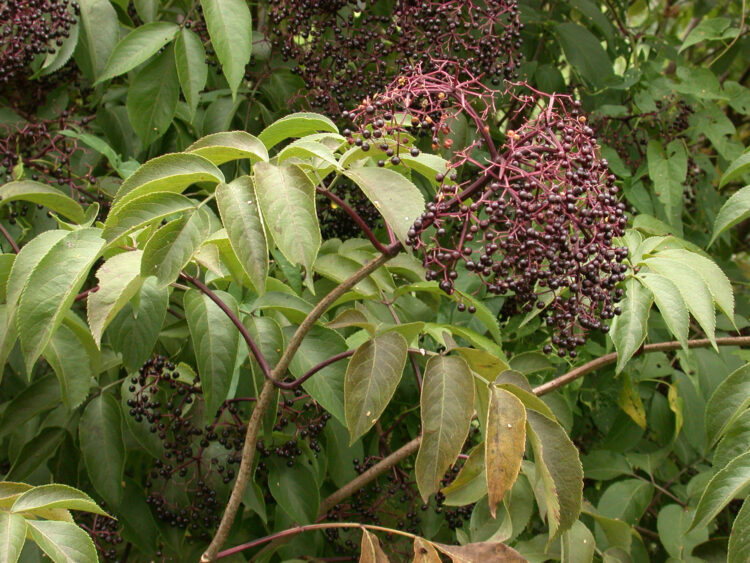
elderberry
Flowers and fruit. In typical Adoxaceae fashion (think Viburnum), the flowers are individually small, 5-merous, with fused petals.
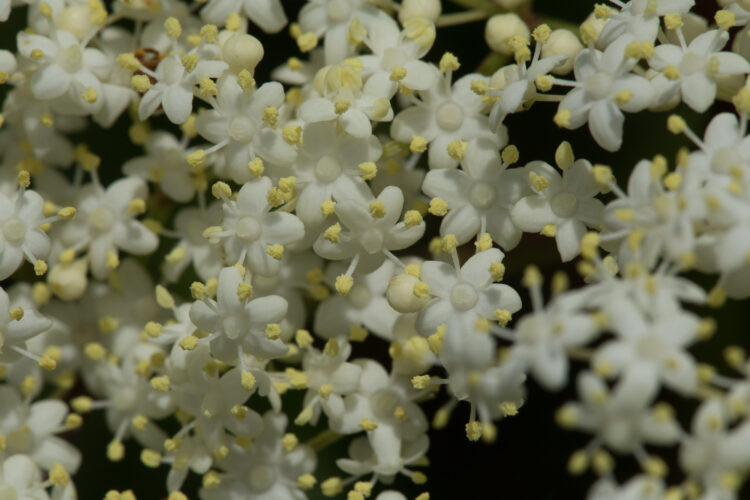
Elderberry flowers are small, but presented in mass displays.
The inflorescence is a compound half-round-topped display of many small flowers.
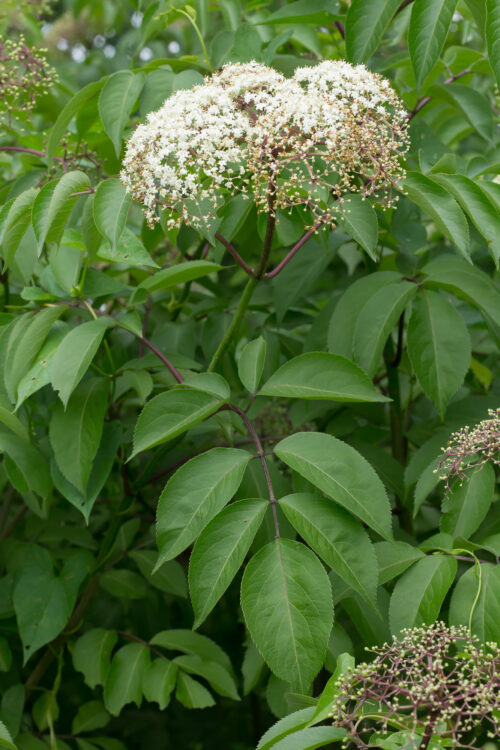
elderberry flowers
The fruits are berry-like drupes relished by birds and rodents, as well as people who use them to make pies, wine and jelly.
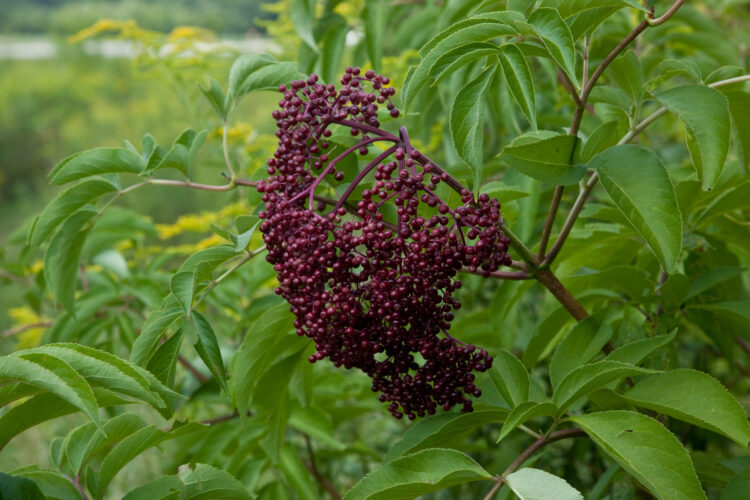
Elderberry fruits are berry-like drupes.
In the winter. Elderberry twigs have especially prominent lenticels, and very wide pith.
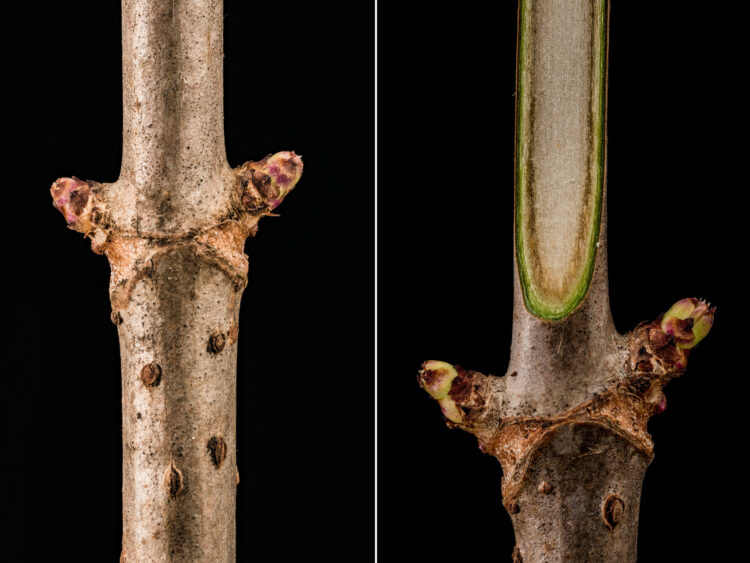
Elderberry has especially wide pith.
Where to find common elderberry. E. Lucy Braun, in The Woody Plants of Ohio (1961, 1989; The Ohio State University Press) tells us that elderberry “Ranges almost throughout the Deciduous Forest; probably in every county in Ohio. Common in rich moist soil, in woods, fields, and on roadsides (where they are being destroyed by poison spray.”
Scanned Image from an Old Book
(Flora of West Virginia, by P.D. Strausbaugh and Earl L. Core)
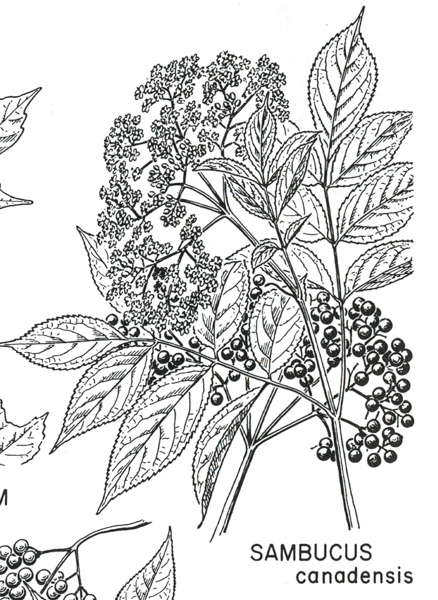
elderberry
Ooh ooh. I have a question!
I read above that common elderberry fruits are good to eat…jams. jellies, wines and so forth. Yum! I also see on our Woody Plants of Ohio list we have another elderberry species, red-berried elder, Sambucus pubens. Is that one OK to eat too?
Nope! Only the purple-black fruited elderberries are OK to eat; Red-berried ones are toxic and should not be gathered.
